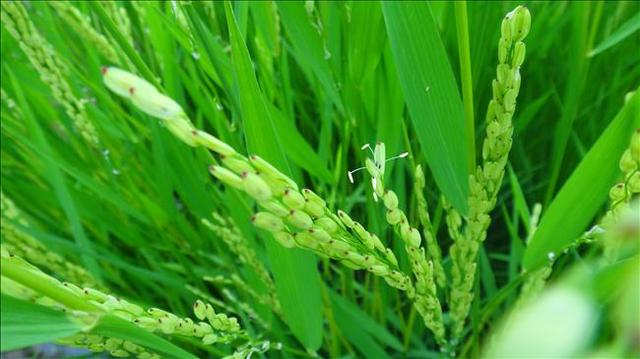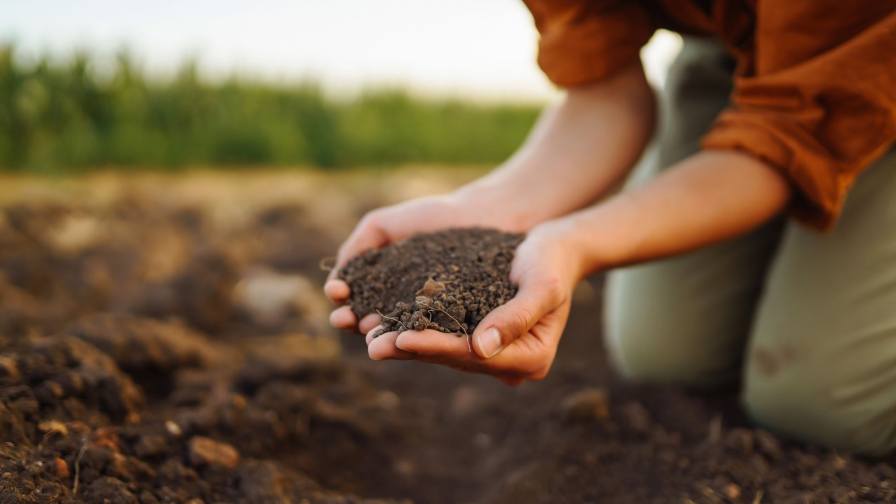Global Rice To Expand
Rice is the most important crop for more than 50% of the world’s population; in Asia, it accounts for 60% to 70% of the daily calorie intake of approximately 2 billion people. In 20 years, says the European Association for Bioindustries (EuropaBio), 200 million more tons of rice will be required annually than is produced this year. With these future needs, growers must not only combat pests, weeds, and diseases — which currently account for losses of up to 40% of crops each year — but also climate change, flooding, and drought.
New Developments
Newer rice technologies have focused less on new chemistries than on modifying rice itself. Developments such as the sequencing of the rice genome allow researchers to create varieties with high yield potential, improved grain quality, and weed/pest resistance. The Philippines-based International Rice Research Institute’s research includes varieties that can tolerate submergence, drought, poor soils, salt water, and low temperatures. Genetically modified (GM) varieties such as Monsanto’s RoundupReady and Bayer CropScience’s LibertyLink increase production through glyphosate resistance; however, many countries are opposed to GM varieties. Last year, a Bayer CropScience strain unapproved for human consumption leaked into the US food chain, causing the world’s largest rice processor, Spain’s Ebro Puleva, to stop buying US rice. The EU and Japan banned US rice imports, and Thailand and Vietnam – which account for almost 50% of all global rice exports – banned all GM rice. Greenpeace reports that since then, 41 rice companies around the world have rejected GM rice.
Weed and Insect Control
Herbicide-tolerant Clearfield rice, successful at combatting wild red rice, is not considered transgenic technology, as it was developed through natural mutation and breeding. Newer Newpath-resistant varieties allow higher-dose applications to manage difficult grasses such as Amazon sprangletop.
Flooding, a long-used method of weed and pest control, requires herbicides for aquatic weeds such as watergrass and sprangletop. Although the varied methods of flooding and drainage affect the amount and types of chemistries used, just a few main chemical groups can provide excellent broad-spectrum control. The top active ingredients are propanil, bensulfuron, carfentrazone, fenoxyprop, molinate, thiobencarb, bispyribac, cyhalofop, glufosinate, glyphosate, and clomazone. In various applications, propanil, cyprodinil, and pendimethalin can also take care of troublesome barnyardgrass and smallflower umbrellasedge. Regarding propanil, RiceCo President and CEO Jim Hines told FCI at the BCPC conference in Glasgow this October that “The registration efforts in Europe are going well. They’re taking a look at the data again on worker exposure, and we’re confident they will find good results.”
Many rice pests can be controlled by a combination of flooding and pesticides. Hines noted that fewer Asian growers are flooding rice, due to the increased cost of labor as the population moves to urban areas, which could mean the use of more chemicals in the future. “In the US, rice farmers average around 7,000 pounds (3,175 kg) per acre using crop protection products.” Hines explained. “In Thailand, the average is around 2,000 pounds (907 kg) per acre. They can increase yields, and they need to. There is a lot of opportunity there.”
Armyworms, which lay their eggs on broadleaf plants, can be controlled when herbicides kill off these weeds; gamma- and lambda-cyhalothrin and zeta-cypermethrin are also effective. The stem borer and rice water weevil are best controlled by pyrethroids, which kill adults; Dimilin, which interferes with egg production and hatching, is also helpful in water weevil control. Additional effective applications are Prolex and Karate Z, the latter of which also controls rice stink bugs at least as well as methyl parathion, commonly used for stink bugs and grasshoppers. Larval infestations such as rice seed midge and grape colaspis can be controlled by fipronil.
Price And Production
According to the US Department of Agriculture (USDA), the 2007/08 US rough rice crop is estimated at 197.1 million cwt; the projected 7,215 pounds per acre yield is the highest on record. Long-grain production is estimated at 138.1 million cwt, and combined medium- and short-grain production is forecast at over 53.6 million cwt.
US farmers expect US $10.30 to $10.70 per cwt, the highest season-average farm price range since 1980/81, attributed to high global prices, record rice import demand, and high priced competitive crops.
Export prices are disparate. Most grades of Thailand’s regular-milled rice are up by US $2 to $17 per ton; Vietnam’s prices are about $5 per ton lower than Thailand’s comparable grades.
Hines predicts a change in Asian farming: “Someone will start more movements to consolidate the markets in Asia, to create larger farms and cooperatives. It may be one or two generations away, but like the US, it’s destined to happen.”
While projected world rice production is a record 418.5 million tons (milled basis), some of the largest producing countries are decreasing production. Projections are lowered for North and South Korea, Australia, and Russia; China’s rice crop alone is down 2.7 million tons, to 127 million tons. Larger plantings were offset by lower yields, raising total global production only moderately above the previous two years.
Imports, Exports, And Stocks
The USDA Economic Research Service projects global rice trade for the 2008 calendar year at a record 29.9 million tons (milled basis). Record setting global imports are also projected, with increases in Iraq, Brazil, China, Australia, Nepal, the Philippines, and Mexico. Imports are forecast down in Indonesia, Iran, Nigeria, Bangladesh, Turkey, and Malaysia. Cuba’s imports are lowered 100,000 tons to 600,000 tons.
For reasons ranging from poor weather in Australia to delivery pace in Thailand, exports are projected to decrease. India’s recent ban on non-basmati exports contributed to its lowered forecast — 4.2 million tons, down by 300,000 — as did Vietnam’s continued ban on new sales, bringing its export forecast to 4.6 million tons. Thailand’s exports were lowered to 8.5 million tons, down 100,000 tons.
Uraguay, Pakistan, Egypt, and Turkey are expected to increase exports, and US rice exports overall are at a projected 106 million cwt, 16% above last year.
Estimated 2007/08 US ending stocks drop 31% over last year, with global ending stocks projected at 70.9 million tons, their lowest since 1983/84. Hines cites the profitability of alternative crops as one reason for the decline. “With production going down and consumption staying the same, the safety stock is disappearing.” he said, “In five to 10 years, there could be a shortage.”






